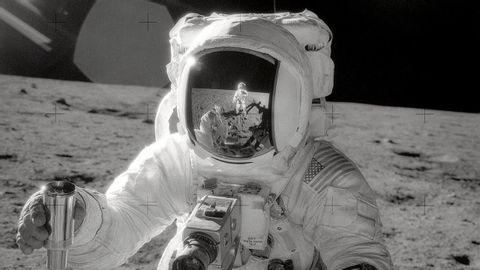アポロ12号の信じられない旅
Zenn が 2020 年 08 月 06 日 に投稿  この条件に一致する単語はありません
この条件に一致する単語はありませんUS /ˈkæmərə, ˈkæmrə/
・
UK /'kæmərə/
- n. (c./u.)カメラ;撮影;撮影所;ウェブカメラ
- v.t./i.去る;残す : (財産などを)残して死ぬ;(ものを)~の状態にしておく;(使用せず)そのままにしておく;残す;~の状態にする
- n. (u.)許可;休暇(期間)
- n. (c./u.)残り物
- n. (c./u.)(24時間の)一日;(朝から夕方までの)日中;デイ
- n. (c.)ハエ;ズボンのチャック
- v.i.(風で)はためく : 舞う;高速で動く;飛行機などで旅行する;(翼を使って)飛ぶ : 飛行する
- v.t.(飛行機を)操縦する
エネルギーを使用
すべての単語を解除
発音・解説・フィルター機能を解除
